Samsung's latest flagship phones restore a couple of popular features dropped from the previous generation.
The Galaxy S7 and Galaxy S7 Edge both accept MicroSD cards, allowing their storage to be expanded, and can also be submerged underwater.
In addition, they feature new gaming tech and a rear camera that should cope better in low-light conditions.
Their overall design, however, is similar to the Galaxy S6 line-up.
Some experts suggested that could pose a challenge.
Some experts suggested that could pose a challenge.
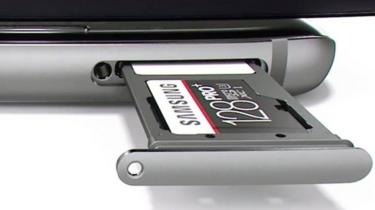 Samsung
Samsung
"Although there are significant improvements under the bonnet with the camera, the chipset, the removable storage and the water resistance, Samsung will have to make sure that's visible to consumers," commented Ian Fogg from the IHS Technology consultancy.
"Because at a glance they look to be the same as last year's model."
Samsung does not disclose smartphone sales numbers. However its share of the market dropped by 2% in 2015, according to research firm IDC, at a time when Apple, Huawei and Xiaomi made gains.
Even so, IDC's data still indicates the South Korean firm remains the bestselling brand by a wide margin.
April 27 2009: Samsung Galaxy
 Samsung’s first Android-powered phone ran version 1.5 (Cupcake) of Google’s mobile operating system.It had a 3.2in (8.1cm) screen and was the first Android phone to include a 3.5mm headphone jack, allowing normal headphones to be easily connected.
Samsung’s first Android-powered phone ran version 1.5 (Cupcake) of Google’s mobile operating system.It had a 3.2in (8.1cm) screen and was the first Android phone to include a 3.5mm headphone jack, allowing normal headphones to be easily connected.March 23 2010: Samsung Galaxy S
 The first of Samsung’s S-branded series had a 4in (10.2cm) screen, ran Android 2.1 (Eclair) and could shoot video in 720p high definition.A 4G variant of the device attracted the ire of Apple’s lawyers, and became part of a high-profile patent case fought by the two rivals.
The first of Samsung’s S-branded series had a 4in (10.2cm) screen, ran Android 2.1 (Eclair) and could shoot video in 720p high definition.A 4G variant of the device attracted the ire of Apple’s lawyers, and became part of a high-profile patent case fought by the two rivals.13 Feb 2011: Samsung Galaxy S2
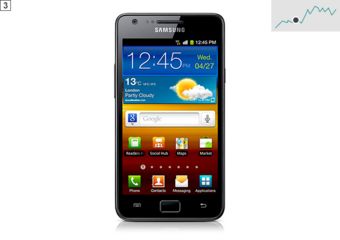 The S2 was marketed as the world’s thinnest smartphone, measuring less than 8.5mm (0.33in) thick.It had a 4.3in (10.9cm) screen and was powered by Android 2.3 (Gingerbread).Samsung promoted the “zero lag” shutter speed of its main camera as being suitable for snapping fast-moving objects.
The S2 was marketed as the world’s thinnest smartphone, measuring less than 8.5mm (0.33in) thick.It had a 4.3in (10.9cm) screen and was powered by Android 2.3 (Gingerbread).Samsung promoted the “zero lag” shutter speed of its main camera as being suitable for snapping fast-moving objects.3 May 2012: Samsung Galaxy S3
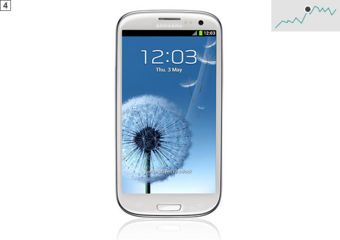 The S3 used eye-tracking software to detect when it was being looked at, keeping its screen bright until its owner turned away.It had a 4.8in (12.cm) screen and ran Android 4.0.4 (Ice Cream Sandwich).The phone also introduced S-Beam, a way to send files and contacts between Samsung handsets.
The S3 used eye-tracking software to detect when it was being looked at, keeping its screen bright until its owner turned away.It had a 4.8in (12.cm) screen and ran Android 4.0.4 (Ice Cream Sandwich).The phone also introduced S-Beam, a way to send files and contacts between Samsung handsets.14 March 2013: Samsung Galaxy S4
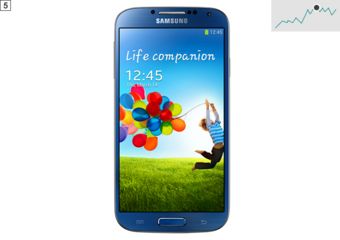 The S4 bordered on “phablet” status with a 5in (12.7cm) touchscreen, which could be used while wearing gloves.Running Android 4.2.2 (Jelly Bean) it introduced a dual-video capture mode, allowing users to record footage from both cameras simultaneously.
The S4 bordered on “phablet” status with a 5in (12.7cm) touchscreen, which could be used while wearing gloves.Running Android 4.2.2 (Jelly Bean) it introduced a dual-video capture mode, allowing users to record footage from both cameras simultaneously.24 February 2014: Samsung Galaxy S5
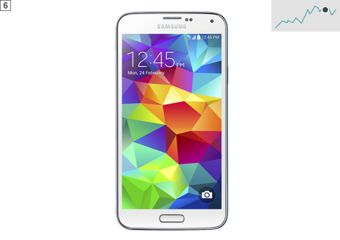 The S5 added dust and water resistance, promising to work after being submerged 3ft (0.9m) deep.It came pre-installed with Android 4.4.2 (KitKat) and introduced a fingerprint scanner and heart rate monitor.Samsung promoted its “ultra power saving mode”, which let the device eke out a day of life when its battery fell below 10%.
The S5 added dust and water resistance, promising to work after being submerged 3ft (0.9m) deep.It came pre-installed with Android 4.4.2 (KitKat) and introduced a fingerprint scanner and heart rate monitor.Samsung promoted its “ultra power saving mode”, which let the device eke out a day of life when its battery fell below 10%.10 April 2015: Samsung Galaxy S6/S6 Edge
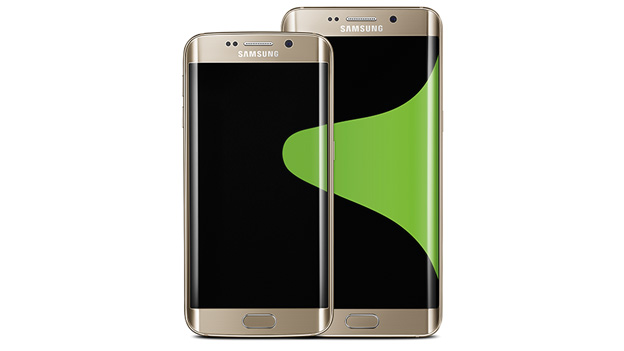 Samsung launched two models of its flagship phone – the Edge version had a screen that curved round its sides and was more expensive.The phones had brighter, more detailed screens than before, and supported the firm’s new smart wallet service Samsung Pay.However, their metal frames and glass-backed designs led to some of the S5’s features being jettisoned, including water resistance and the microSD slot.
Samsung launched two models of its flagship phone – the Edge version had a screen that curved round its sides and was more expensive.The phones had brighter, more detailed screens than before, and supported the firm’s new smart wallet service Samsung Pay.However, their metal frames and glass-backed designs led to some of the S5’s features being jettisoned, including water resistance and the microSD slot.
Optimised for games
While the Galaxy S7 retains the same sized screen as the S6, the S7 Edge's display has grown slightly from 5.1in (13cm) to 5.5in (14cm).
The Edge version is also slightly curvier than before and its camera protrudes less far out.
In addition, the "edged" parts of the screen now provide shortcuts to email, different photo modes and third-party apps.
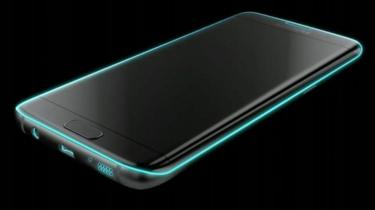 Samsung
Samsung
Both phones:
- now accept MicroSD cards with up to 200 gigabytes of storage, which fit onto the same tray as their SIM cards
- have higher capacity batteries - the S7 Edge can reportedly play up to 15 hours of high definition video on a charge
- have IP68 water resistance ratings, meaning they can be safely immersed to depths of 1.5m (4.9ft) for up to 30 minutes
- have an "always on display" function that shows notifications and the time without needing to wake the screen up
- retain the wireless charging capabilities of the S6 models
They also feature processors that are faster than before and capable of supporting the Vulkan API (application program interface).

This is an open standard that lets games make more efficient use of a chip's graphics processing units (GPUs). Modern PCs and games consoles can already support Vulkan, but Samsung says its smartphones are the first to do so.
The firm has also added a "thermal spreader" to the phone's innards. This is a 0.4mm-thick tube of water that turns to steam, cooling down the processor, when required.
It should allow the handset to better handle graphics-intensive titles without overheating.
In addition, Samsung has made it easier to record gameplay for later playback.
Dual pixel autofocus
The new rear camera introduces two innovations.
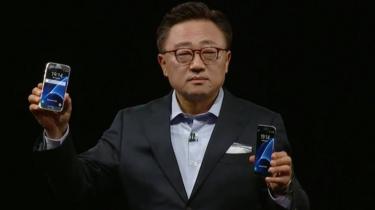 Samsung
Samsung
Firstly, it has a bigger aperture of f/1.7 rather than f/1.9. This means the lens lets in about 25% more light than before. The pixels are also slightly bigger, which should mean the phones are more capable at taking low-light photos without the need for flash.
Secondly, its sensor is the first on a smartphone to feature "dual pixel autofocus".
This means each pixel can be used to both record the image and determine focus rather than just one or the other. This enables the phone to lock focus to an object more quickly for stills, and deliver smoother focus tracking in video mode.
The technology was first developed by Canon, and until now was limited to the Japanese firm'sDSLR (digital single-lens reflex) and Cinema cameras.
 Samsung
Samsung
"It's not easy to explain or even show off at the point of sale, and that's something Samsung will struggle with," commented IDC analyst Francisco Jeronimo.
"But I believe those users who start using it will quickly realise it does make a difference and will help them get better pictures."
One consequence of adding the new technologies is that the camera's resolution has had to decrease from 16 megapixels to 12MP.
Virtual reality camera
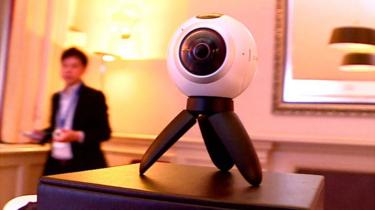
The South Korean firm also introduced a 360-degree camera. It can film footage for playback on its virtual reality headset, which Samsung makes in partnership with Facebook's Oculus division.
The Gear 360's interactive pictures and videos can also be uploaded to Facebook and YouTube.
The device is only compatible with the firm's own handsets. That contrasts with a similar camera unveiled by LG that works with both Android and iOS phones.
One analyst suggested such kit could "add a new dimension" to weddings and other big occasions.
 Samsung
Samsung
"These cameras will allow users to easily create their own 360-degree content, and this will help fuel demand for virtual reality accessories and broader acceptance of the new types of photos and videos," said Ben Wood from CCS Insight.
It was also revealed that the Samsung Pay smart wallet service would be expanded to the UK, Australia, Brazil, Canada, China, Singapore and Spain this year.
Sales dilemma
One company watcher suggested it was a "no brainer" to pick the new phones over the Galaxy S5 and earlier handsets, but a harder sell when compared to the S6 range.
 Samsung
Samsung
"Samsung has a problem that is actually shared by most smartphone companies today," said Carolina Milanesi from Kantar Worldpanel ComTech.
"Each year's phones look more and more alike and what gets tweaked is more of a finesse to what's inside, and that's really hard to convince customers to pay extra for in stores."
Even so, a spokesman for Samsung said it intended to leave the S6 phones on sale alongside the new devices.
No comments:
Post a Comment